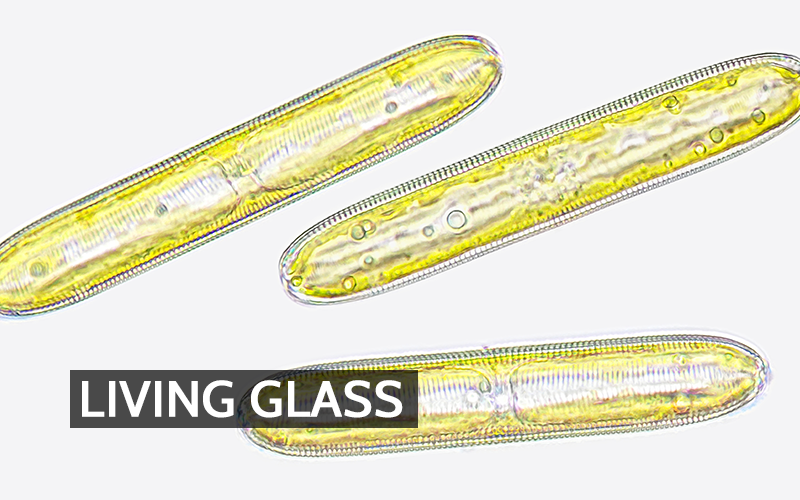Diatoms, microscopic algae encased in intricate silica shells, are renowned for their role in aquatic ecosystems and global carbon cycling. While traditionally associated with water bodies, research has unveiled their ability to traverse the atmosphere, influencing both environmental dynamics and air quality.
Airborne Journeys: How Diatoms Disperse Through the Atmosphere
Diatoms primarily inhabit freshwater and marine environments, yet they possess an extraordinary capacity for aerial dispersal. Their lightweight silica frustules enable them to become airborne through various mechanisms:
- Wind Uplift: Strong winds can lift diatoms from wet surfaces, such as mudflats or dried lake beds, into the atmosphere.
- Sea Spray: Ocean waves and bubble-bursting processes can eject diatoms into the air, especially during storms.
- Anthropogenic Activities: Human actions, including agriculture and construction, can disturb sediments, releasing diatoms into the air.
Once airborne, diatoms can travel vast distances, potentially crossing continents before settling in new aquatic habitats. This dispersal is crucial for colonizing new environments and maintaining genetic diversity among diatom populations.
Survival in the Sky: Diatoms’ Resilience to Atmospheric Conditions
The atmosphere presents a harsh environment for microorganisms, with challenges such as UV radiation, desiccation, and temperature fluctuations. Remarkably, diatoms exhibit resilience to all of these conditions. Their silica shells provide protection against UV damage and desiccation, allowing them to remain viable during atmospheric transport.
Studies have demonstrated that certain diatom species can survive prolonged exposure to air, resuming normal functions upon rehydration in suitable aquatic environments. This resilience shows their potential to influence ecosystems far from their origin.
Implications for Air Quality and Human Health
The presence of diatoms in the atmosphere has notable implications for air quality and public health:
- Bioaerosols: Airborne diatoms contribute to the complex mixture of biological particles, or bioaerosols, in the atmosphere. These can affect cloud formation and precipitation patterns, influencing climate and weather systems.
- Allergenic Potential: While diatoms are not traditionally associated with allergies, their presence in the air could contribute to respiratory issues in sensitive individuals, especially when combined with other allergens.
- Indoor Air Quality: Diatoms have been explored for their potential in improving indoor air quality. Their porous silica structures can adsorb volatile organic compounds (VOCs) and odors, suggesting applications in air purification technologies.
Diatoms as Bioindicators: Monitoring Environmental Changes
Beyond their ecological roles, diatoms serve as valuable bioindicators for monitoring environmental changes:
- Water Quality Assessment: The composition of diatom communities in water bodies reflects environmental conditions, such as nutrient levels and pH. By analyzing diatom assemblages, scientists can assess the health of aquatic ecosystems and detect pollution.
- Historical Climate Data: Diatom fossils in sediment cores provide insights into past climate conditions, aiding in the reconstruction of historical environmental changes.
- Atmospheric Deposition Studies: The presence of diatoms in atmospheric samples can indicate the extent of atmospheric deposition, offering a unique perspective on air pollution and its impact on ecosystems.
Embracing the Multifaceted Roles of Airborne Diatoms
Diatoms’ ability to disperse through the air and influence diverse environmental processes highlights their significance beyond aquatic ecosystems. Their roles in atmospheric dynamics, air quality, and environmental monitoring show the interconnectedness of Earth’s systems. Ongoing research into diatom dispersal reveals their unexpected role in shaping ecosystems and tracking environmental change.
Related AirQuality.News Article:
Bacteria in the Atmosphere: A New Frontier in Climate Science
References:
- https://fourtruffles.com/blogs/wellness-journal/diatoms-natures-tiny-powerhouses
- https://rsscience.com/diatom/
- https://www.apis.ac.uk/node/1196
- https://link.springer.com/article/10.1007/s11869-021-00978-z
- https://en.wikipedia.org/wiki/Bioaerosol
- https://link.springer.com/article/10.1007/s00027-021-00838-z
Image Ref: AdobeStock_592501354


